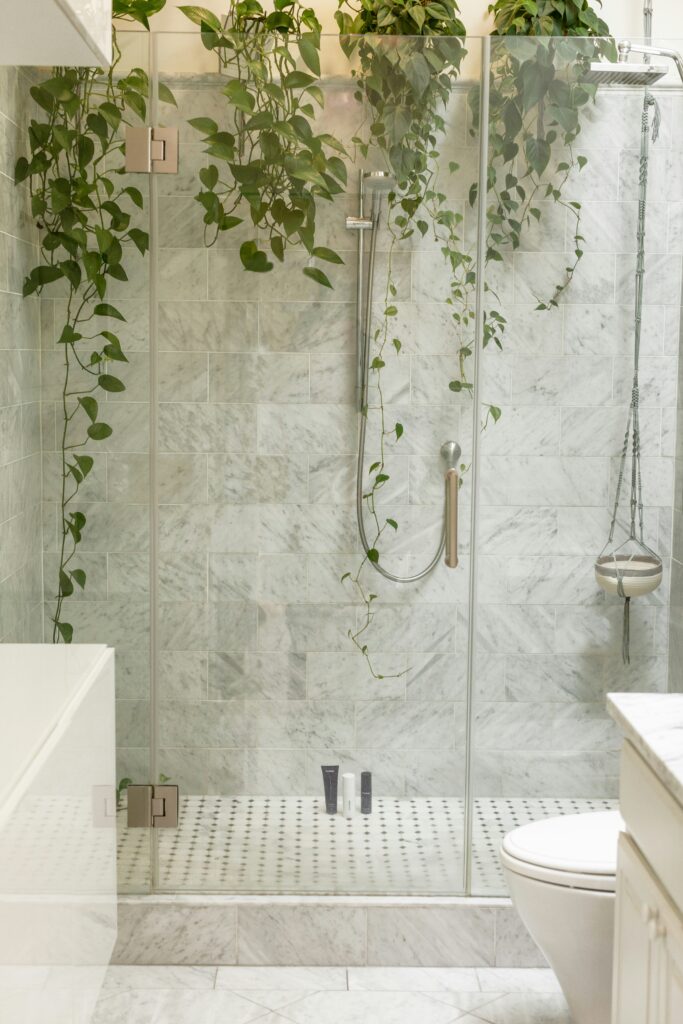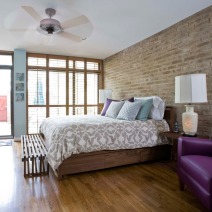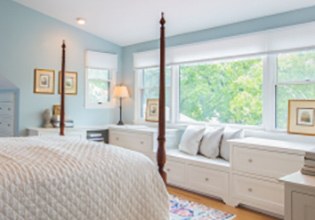Aging-in-Place Interior Design in MD, VA, & DC
Aging-in-place interior design, or universal design, is an increasingly common consideration for home remodeling projects—and not just for those with disabilities or age-related health conditions. While it’s often used for senior living renovations, people of all ages recognize the value of designing homes that are accessible, comfortable, and adaptable for the long term, regardless of their current mobility or health status.
This shift toward aging-in-place remodeling is driven by a growing awareness of the concept’s benefits, demographic trends, and changing preferences around independent living. In recent years, living-in-place remodeling has evolved from a niche concern to a mainstream priority for homeowners of all ages and abilities.
Wentworth’s acclaimed in-house design-build team excels in creating beautiful, contemporary remodeling designs that enhance a home’s aesthetic appeal while incorporating aging-in-place’s fundamental safety and comfort aspects.
Benefits of Aging-in-Place
Staying in one’s home provides a sense of independence and autonomy. It is strongly linked to greater health and happiness, particularly for seniors who might otherwise experience isolation. Homeowners in their 50s and 60s who are in excellent health enjoy numerous benefits by considering aging-in-place principles when remodeling, including:
- Remaining in familiar settings can reduce stress and contribute to mental well-being.
- Avoiding the high costs associated with residential care facilities.
- Continuing social interaction with friends and neighbors.
- Customized living spaces that meet specific needs and preferences.
- Increased property value.
Aging-in-Place Kitchen Design
When redesigning a kitchen for aging-in-place, we focus on enhancing accessibility, comfort, and usability. Careful thought is given to the placement and height of critical features, ensuring they are within comfortable reach.
To create an optimized aging-in-place kitchen, our designers consider factors such as:
- Incorporating a shallow sink basin and adjusting sink height for easy access.
- Positioning the sink close to the stove for efficiency.
- Installing large, easy-to-access drawers with D-shaped pulls and a pull-out pantry system.
- Rounding countertop edges to prevent injury.
- Placing the microwave and other appliances at comfortable heights.
- Adding under-cabinet lighting to improve visibility.
- Building an island with at least 42-58 inches of maneuvering space around it.
- Creating seated workspaces and wheelchair-accommodating prep surfaces.
- Installing hands-free faucets.
- Choosing a cooktop with front-mounted controls.
- Positioning refrigerator storage shelves for quick access.
- Placing front-mounted controls on the cooktop.
By incorporating these and other universal design features in your kitchen remodel, you can enjoy a space that is both highly functional and visually appealing.
Aging-in-Place Bathroom Design
Embracing universal bathroom design means putting aside some preconceptions, especially the idea that it’s “for old people” or means sacrificing great looks. Instead, it’s about creating a new bath that’s as beautiful to look at as it is easy to use.
Circulation, fixture location, doorways, and grab bars are essential in aging-in-place bathroom design. As many older or disabled people experience accidents or injuries in the bathroom, it’s important to:
- Adjust toilet height and place its center at least 16 inches from the wall.
- Install some cabinetry and shelving that’s within reach of a wheelchair user.
- Create doorways at least 32 inches wide when the door is open at a 90-degree angle.
- Design a floorplan with a 60-inch minimum diameter clear circle that allows everyone to move freely and access fixtures.
- Choose a bathtub with a 30-inch wide clear space that runs its entire length.
- Install a roll-in shower curb no greater than a half-inch and incorporate a seat along the wall across from the shower valve control.
- Place grab bars in showers, bathtubs, near toilets, and by sinks to prevent trips, slips, and falls.
Safety Concerns for Aging-in-Place Design
Key safety concerns for aging-in-place design are fall prevention, bathroom and kitchen safety, and mobility access. Addressing these concerns in the remodeling design phase ensures homeowners live more comfortably and independently. However, it doesn’t mean sacrificing lifestyle or luxury. Wentworth designs living-in-place remodels and renovations where function and beauty work together to ensure you give up nothing in exchange for safety and accessibility.
Ready to start designing your new universal design kitchen or bathroom? Interested in knowing more about aging-in-place design principles? Schedule a conversation with us today.










